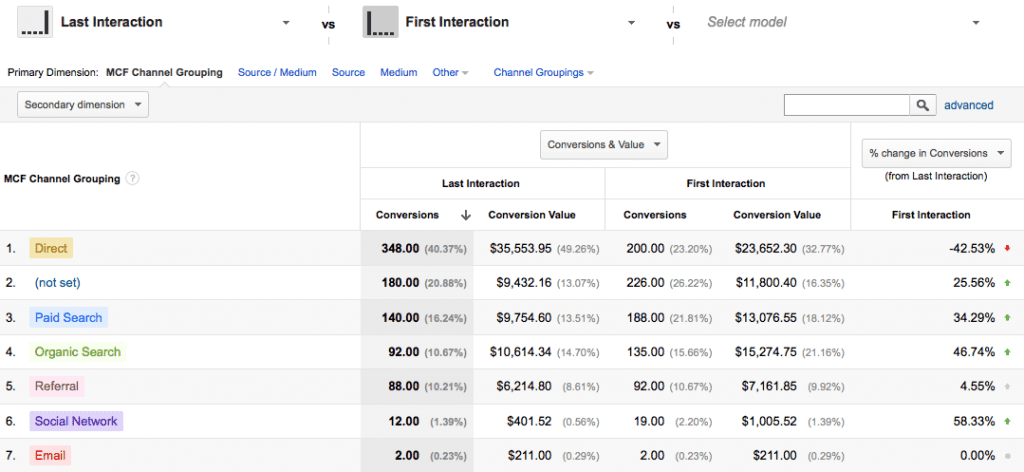 A very scary and very real scenario:
A very scary and very real scenario:
An avid Google Analytics user has been evaluating the performance of his ecommerce client’s Adwords campaign for several months now and the revenue numbers just don’t match up. Looking at sales from PPC, the cost is far outweighing the total revenue from this channel, however looking at sales across all channels, revenue is up substantially. After repeated meetings with his client with the same old routine of downplaying poor Adwords performance and promoting the increased performance across other channels, our marketing specialist and his client finally give up on paid search.
The following month, suddenly sales start to fall off again to the pre-Adwords days. Sales from other channels begin to decline and both marketer and client are dumbfounded. Yes, costs have gone down (which is great) and so has subsequent traffic from Adwords (expected), but the drop seems to be too much of a coincidence.
Enter channel attribution modeling. If you’ve never seen the model comparison tool in Google Analytics, you are not alone. As seen in the photo to the right, the attribution modeling is actually the very last item on the very last tab of the analytics navigation! It’s too bad too, because this tool can be such a great asset in determining the true effectiveness of your campaigns and also shows how a first interaction from one channel might be producing much bigger results further on down the funnel.
The importance of multi-channel marketing:
Although our primary focus at Fungi is on email marketing and marketing automation, we utilize a variety of different marketing techniques and analysis to improve the performance of each client’s marketing initiatives. It is SUPER IMPORTANT to understand how each of your channels interact with one another. Not every customer is going to convert the first time they visit your site. Understanding how they got there the first time and subsequent visits up to conversion and beyond will produce a replicable marketing flow for you to repeat for other potential customers. Below is a sample screenshot of last versus first click attribution comparing ecommerce conversions and revenue metrics. Notice how much of an difference there is between last click (most recent) social, paid and organic conversions and first visit to the site resulting in sales.

Perhaps if our marketing specialist from the scenario earlier had realized how much his first click paid search interactions were impacting sales (35% higher in the screenshot example), he might have continued his paid search campaigns and began refining based on which campaigns resulted in the highest first interaction revenue. Keep in mind also that this doesn’t include interim visits (between first and last click). Each step in the process is key to understanding how your converting customers behave.
Have more questions about attribution modeling or want our team to provide some recommendations? Visit our contact page to fill out a quick form or call us at: (919) 636-9835.
